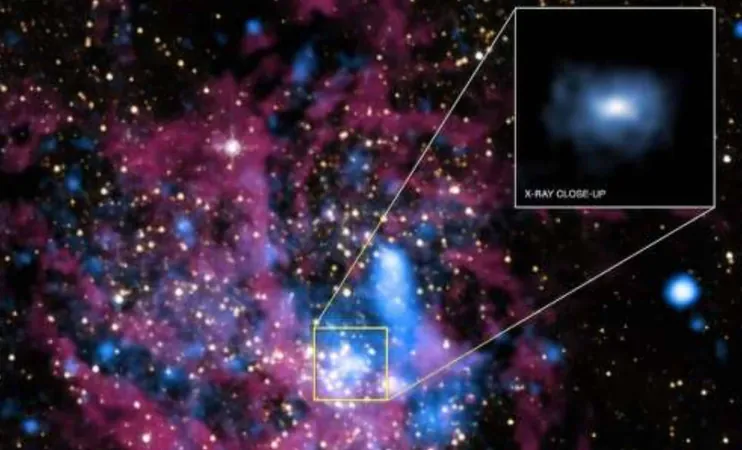
Unlocking the Cosmic Symphony: Gravitational Waves from the Heart of the Milky Way
2025-05-10
Author: Chun
A Revolutionary Discovery in Our Galaxy
A groundbreaking study has revealed an incredible phenomenon at the core of the Milky Way Galaxy—an entire orchestra of gravitational waves is being produced by various cosmic entities, including our very own supermassive black hole, Sagittarius A*, alongside binary black holes, neutron stars, and white dwarfs. While these gravitational waves are currently too faint for existing technology to detect, upcoming observatories like the Laser Interferometer Space Antenna (LISA) promise to transform our understanding of these cosmic vibrations.
The Galactic Center: The Heart of Cosmic Activity
At the center of our galaxy lies Sagittarius A*, a supermassive black hole that acts as the anchor for a flurry of gravitational activities. Surrounded by a mix of celestial bodies—binary black holes, neutron stars, and white dwarfs—each contributes to the gravitational waves rippling through spacetime. As these cosmic bodies spiral closer together, they create gravitational waves so faint that current detection methods struggle to pick them up.
Peering into the Dynamics of the Cosmos
What’s mesmerizing about these gravitational waves is their potential to provide a window into the workings of these celestial systems. While today’s detectors can catch the final moments of cosmic collisions—known as the 'chirp' of gravitational waves—the future capabilities of LISA could allow astronomers to study these waves long before any colliding bodies actually meet. This extended observation could yield crucial insights into the powerful forces at play in our universe.
Taming the Noise: A Galactic Challenge
However, researchers face a daunting challenge: a torrent of overlapping gravitational signals. Beyond binary black holes, a multitude of other sources adds to the mix of gravitational waves, creating a dense 'background noise' around Sagittarius A*. Neutron stars closely orbiting the black hole can emit their own gravitational waves, potentially obscuring the clearer signals from merging black holes. This complexity poses a significant hurdle for the upcoming LISA, which is set to provide unprecedented detail on gravitational waves.
Harnessing Technology: Can Machine Learning Come to the Rescue?
To sort through this overwhelming sea of gravitational data, astronomers are turning to cutting-edge solutions. One promising avenue is the use of machine learning algorithms that could intelligently sift through the vast amounts of information generated by gravitational wave observatories. These advanced algorithms could help identify distinct signals amidst the cacophony, enabling scientists to pinpoint significant cosmic events and deepen our understanding of the universe’s mysteries.
What Does the Future Hold?
As we stand at the brink of a new era in astronomy, the prospect of listening to the gravitational symphony of the Milky Way ignites excitement. With future technologies poised to unravel the intricate dance of cosmic bodies, we may soon hear the whispers of the universe, revealing secrets that could change our understanding of existence itself.


 Brasil (PT)
Brasil (PT)
 Canada (EN)
Canada (EN)
 Chile (ES)
Chile (ES)
 Česko (CS)
Česko (CS)
 대한민국 (KO)
대한민국 (KO)
 España (ES)
España (ES)
 France (FR)
France (FR)
 Hong Kong (EN)
Hong Kong (EN)
 Italia (IT)
Italia (IT)
 日本 (JA)
日本 (JA)
 Magyarország (HU)
Magyarország (HU)
 Norge (NO)
Norge (NO)
 Polska (PL)
Polska (PL)
 Schweiz (DE)
Schweiz (DE)
 Singapore (EN)
Singapore (EN)
 Sverige (SV)
Sverige (SV)
 Suomi (FI)
Suomi (FI)
 Türkiye (TR)
Türkiye (TR)
 الإمارات العربية المتحدة (AR)
الإمارات العربية المتحدة (AR)